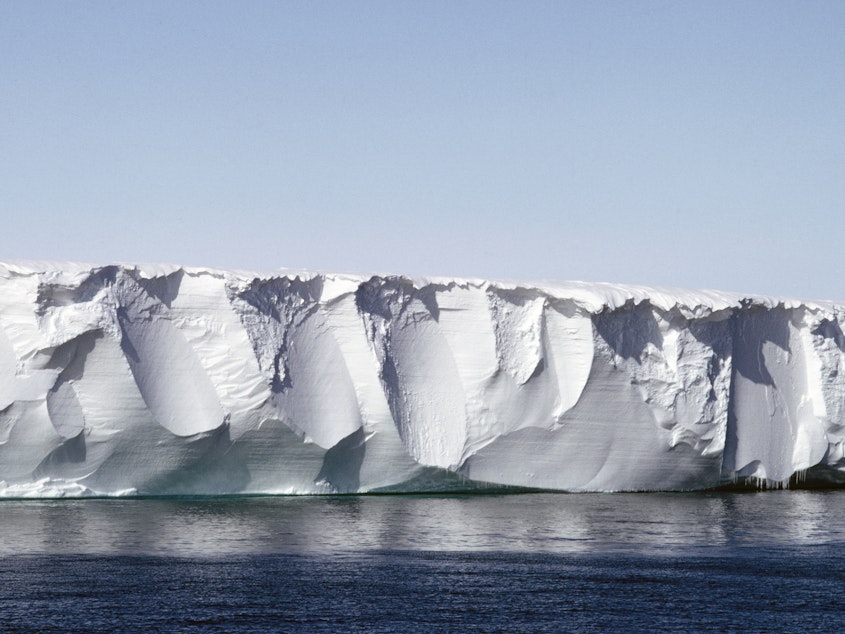Scientists Learn To Hear The 'Songs' Of Ice Shelves

The "whistling" of the Ross Ice Shelf, Antarctica's largest, is beautifully eerie. It's also potentially a divining rod for changes to shelves' composition that can be monitored in real time.
Listening to it, the opening moan of Fever Ray's song "If I Had A Heart" comes to mind, or the dramatic composition Inuksuit from John Luther Adams:
To arrive at their new recording, twelve scientists working on the ice shelf burrowed 34 tools for measuring seismic activity into it, expecting to monitor its internal vibrations. They noticed, however, that surface wind glazing over the "firn" — the top layer of snow of the shelf — was feeding noise into their sensors.
But what was at first considered to be "inconvenient ambient noise," as the glaciologist Douglas R. MacAyeal put it in a summation of the new findings, ended up giving insight into meltwater effects on that firn layer, giving scientists another data point on the shelf's structural integrity. Meaning whether or not it will break up, and thus raise sea levels. Not bad for a whistle or two.
More music from the natural world
Sponsored
The New Orleans-based artist Quintron, through his company Quintronics, developed the Weather Warlock, a "giant analog synth" that is based around an F-major chord, but varies its resulting music due to input from the weather (temperature, wind, sun and rain) it's experiencing at any given time. The result, which you can stream 24 hours a day from its current home in Los Angeles, is mercurial and meditative and worth leaving in your headphones for a while. "Our hope is that this instrument could be of some help to those experiencing any type of sleep disorder or to anyone suffering from stress or health issues which might benefit from a direct musical connection to nature," its creators note. (They also note it is not meant to offer any medical treatment.)
The Baka in southeastern Cameroon use water as a drum, resulting in a fluent, calming rhythmic form.
Or, if you're sick of Earth entirely, NASA has an archive of "spooky" space sounds — perfect for Halloween. (Not so sure about that cover art, however.)
[Copyright 2018 NPR]



